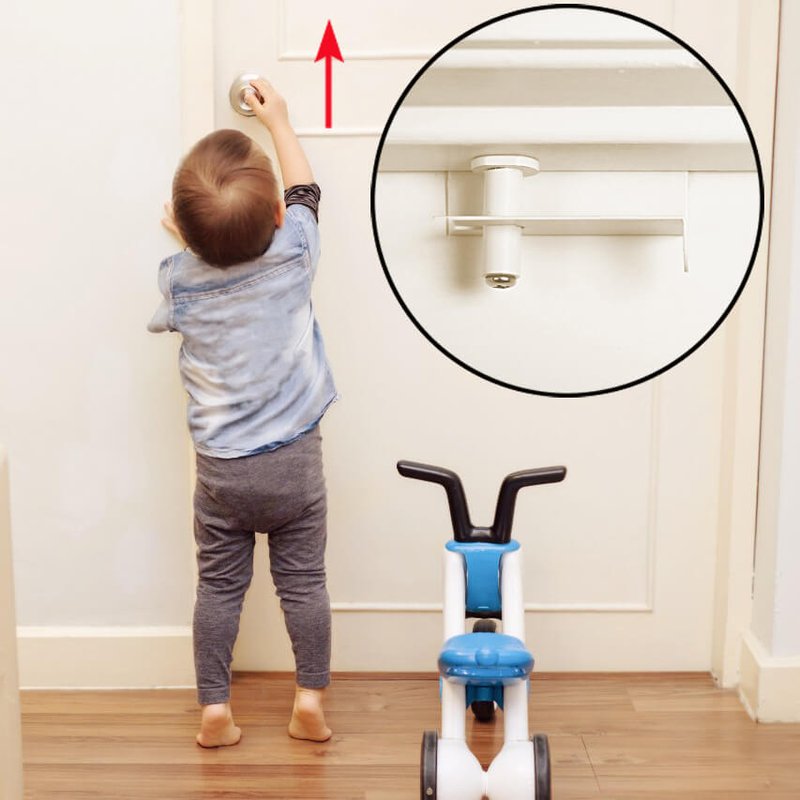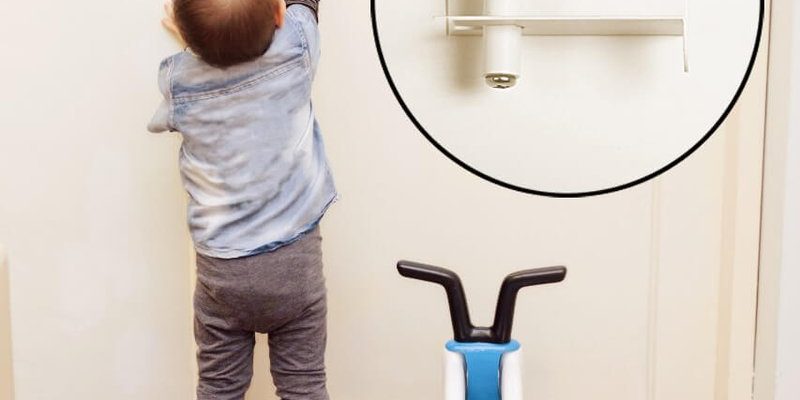
When considering how to child-proof your door hardware, the first step is understanding the types of locks and knobs you have in your home. Many parents assume that simply having a door closed is enough, but kids are relentless in their quest for adventure. Just like a magician’s trick, what seems secure might be easily accessible for little fingers. Whether it’s a simple knob or a more complex lock mechanism, let’s explore effective solutions to ensure your doors are safe.
Understanding the Types of Door Hardware
Before you can implement any child-proofing measures, you need to familiarize yourself with the different types of door hardware commonly found in homes. Door hardware generally includes doorknobs, deadbolts, and latches. Each type has unique features that can affect how easily a child can access them.
Doorknobs are the most common hardware you’ll encounter. They can come in a standard design that turns or a lever-style that’s easier for small hands to operate. Then there are deadbolts, which provide extra security, usually requiring a key or a thumb turn from the inside. Lastly, you have latch lock mechanisms, which can sometimes be hidden from sight but are easily accessible if a child knows where to look.
Recognizing these distinctions is key for child-proofing your home. For example, standard doorknobs can often be turned by even toddlers, while deadbolts may offer more security but can be tricky for adults to operate quickly in an emergency. Thinking through scenarios can help you identify which hardware needs to be addressed first.
Choosing Child-Proof Door Hardware
Once you’ve assessed your door hardware, the next step is selecting child-proof options. There are various child-proof doorknobs and locks specifically designed to keep curious kids at bay.
You might want to consider doorknob covers, which fit over standard knobs. These covers require a bit of dexterity to open, making it difficult for children but easy for adults. Another option is lever-style locks that can be turned with a push, but they also come with child-proofing features, preventing little ones from opening doors unexpectedly.
If you have sliding doors, look for sliding door locks that provide added safety. These locks prevent kids from being able to slide the door open, keeping them secure. When choosing child-proof hardware, be sure that they meet safety standards and are easy for you to use.
Installing Child-Proofing Devices
Installing child-proofing devices is simpler than it might seem. Most options come with straightforward instruction manuals, often requiring only basic tools like a screwdriver.
1. Doorknob Covers: Simply slide the cover over the existing doorknob. Ensure it’s snug and can’t be easily twisted or removed by a child.
2. Child-Proof Locks: For locks, you’ll need to remove existing hardware before attaching the new lock. Follow the manufacturer’s instructions for securing it properly.
3. Sliding Door Locks: If you’re adding a lock to a sliding door, measure where to place the lock carefully and drill as instructed.
Remember to check the functionality of each installation. You want to make sure that it doesn’t interfere with adult access in case of an emergency.
Regularly Inspecting Door Hardware
Child-proofing your home isn’t a one-time task; it requires ongoing attention. Over time, the wear and tear of everyday use can loosen knobs or make locks tricky to operate. Regularly inspecting your door hardware ensures everything remains in tip-top shape.
Check for signs of wear, such as shifting knobs or rusted screws. If you notice any issues, it’s best to address them sooner rather than later. Not only can a malfunctioning lock pose a safety risk, but it can also become a gateway for curious children.
Additionally, make it a habit to involve your kids in understanding the importance of door safety. Teach them that certain doors are off-limits without supervision. Although they might not fully grasp the concept, the repetition can help reinforce boundaries over time.
Using Additional Safety Devices
In addition to child-proof hardware, consider using other safety devices to enhance your child-proofing strategy. These can add an extra layer of security and help keep your children safe.
Door alarms can be particularly effective. These sensors alert you if a door is opened, giving you a heads-up if little ones are trying to sneak out. You can also look into door straps, which securely hold doors shut while still allowing adults to open them easily.
Another clever solution is a door stop that prevents the door from closing fully. This can be particularly handy if you have rooms that shouldn’t be locked but need some form of restriction. A simple yet effective doorstop can work wonders in keeping children safe.
Teaching Children About Safety
Child-proofing isn’t just about hardware; it also involves teaching your little ones about safety. Start early, explaining the reasons behind restrictions. Using everyday scenarios can help them understand what’s off-limits.
For example, you might say, “This door stays closed because it leads to the garage, where we keep tools that can hurt you.” It’s crucial to create an environment where children feel safe and aware of potential dangers.
Involving them in the process of child-proofing can also help. Let them see the changes being made, and encourage them to ask questions. This not only boosts their understanding but also fosters a sense of responsibility. It might even spark their curiosity about safety in other areas of the home!
Child-proofing your interior door hardware doesn’t have to be an overwhelming task. By understanding your current setup, choosing the right child-proofing products, and regularly inspecting your hardware, you can create a safer haven for your children.
Remember, safety is a continuous process that involves both hardware and education. As your children grow, revisit the safety measures and update them accordingly. Ultimately, taking the time now to secure your home can pay tremendous dividends, giving you peace of mind and letting your little ones explore freely. Keep nurturing that curious spirit but do so with safety in mind.
